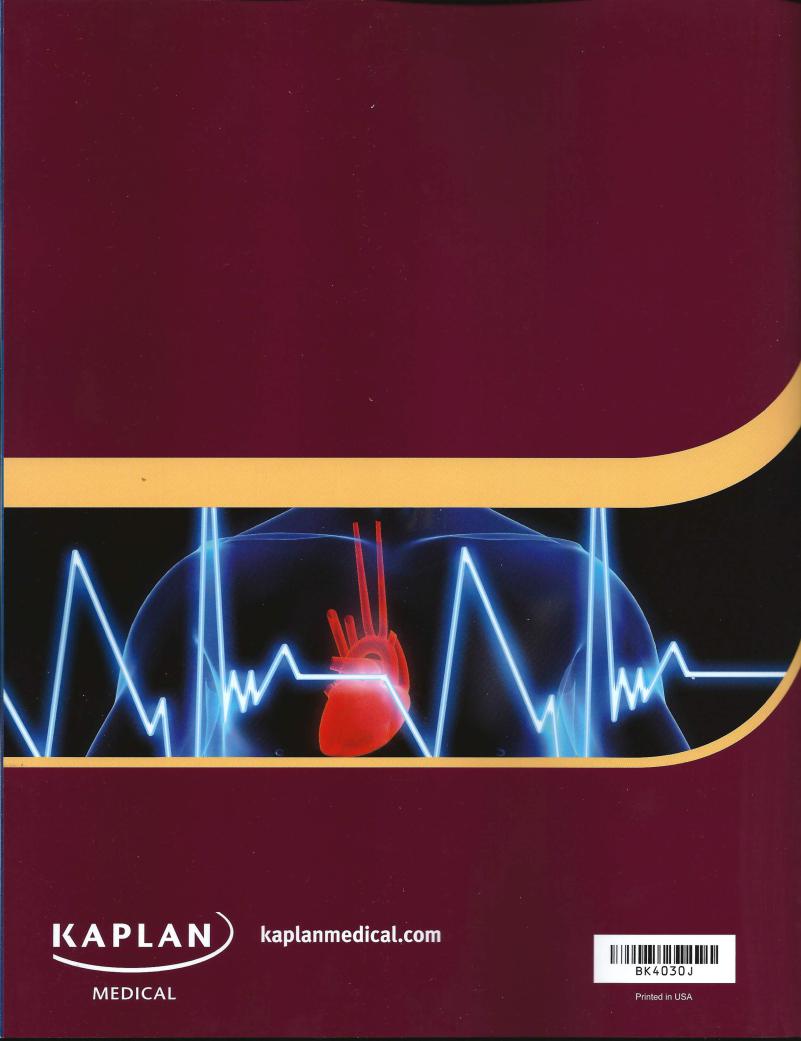

Index
Note: Pagenumbers followed byfand tindicatefigures and tables respectively.
A
a wave, in venous pulse tracing, 124, 124{, 125f Absoluterefractoryperiod, 31, 31/, 63, 63f Absorption. See also Reabsorption
filtration and, 1 1-12, l lf forces for, 12
in gastrointestinal tract, 403-406, 403/, 404/, 406f Acclimatization, to high altitude, l77t
ACE inhibitors
effect on renal system, 204 guidelines for use, 204
Acetylcholine (Ach)
effect on SA nodal cells, 42, 42f
in neuromuscular transmission, 32-33 Achalasia, 390
Acid secretion, control of, 394-395, 394f
Acid-base disturbances/disorders. See also Acidosis; Alkalosis arterial values in, normal systemic, 244
buffering systems and, 243
compensatory mechanisms in, 245-246, 248-250 diagnosis of
example ABGs in, 250-251 flow chart for, 250f
graphical representation in, 252-254, 252f-254f three-question approach to, 243-244, 248-250
metabolic, 244, 245, 245t. See also Metabolicacidosis; Metabolic alkalosis
potassium, 236 primaryforms of, 244
respiratory, 244, 245, 245t. See also Respiratoryacidosis; Respiratory alkalosis
Acidosis, 236
diagnosis of, three-question approach to, 243-244, 248-250 metabolic. See Metabolic acidosis
renal compensation in, 245 respiratory. See Respiratory acidosis respiratory compensation in, 246
Acromegaly, 357-358 Actin, 56f, 57
Action potential(s), 27, 27f cardiac, 38-41
changes in conductance and, 30f conduction velocityof, 31
during muscle contraction, 60-Ql, 6lf properties of, 31, 3lf
refractory periods of, 31, 3lf sinoatrial node, phases in, 40-41, 40f subthresholdstimulus, 29
threshold stimulus, 29-30 ventricular, phases in, 38-40, 39f
Active transport, 207 primary, 208
secondary, 208-209, 209f, 210f Addison's disease, 291 Adenomas, pituitary, 267, 290 Adipose tissue
epinephrine actions in, 305, 306f insulin effects on, 311, 312/, 313f
Adrenal androgens, 279 Adrenal cortex
anatomy of, 277, 277f
loss offunction, consequences of, 277-278 Adrenal insufficiency
hydration changes in, 7f-8f primary hypocortisolism and, 291
Adrenal medulla
epinephrine and, 305, 306/, 307 hormones of, 305
metabolic actions of, 305, 306f Adrenocorticotropin (ACTH)
control of, 283-284, 283f ectopic, 290, 292t
role of, 284
Adultrespiratory distress syndrome (ARDS), 14, 149 Adults, hormone secretion in males, 363
Afterload
cardiacmuscle, 76, 80f cardiac output and, 97 skeletal muscle, 65, 67, 68f
Age/Aging
hormone secretion in adult males, 363 male reproductive system and, 362-363, 362f.
Airway resistance, 150, 150f
Airways, dynamic compression of, 152, 153f Alcohol, effect on ADH secretion, 272 Aldosterone
physiologic actions of, 284-285 specific actions of, 285, 285t synthesis pathwayfor,280, 280f
Aldosterone secretion control of, 285-288 factors in, 9
physiologic changes in, 288 potassium effect and, 288
Alkalosis, 236
diagnosis of, three-question approach to, 243-244, 248-250 metabolic. SeeMetabolic alkalosis
renal compensation in, 246 respiratory. See Respiratoryalkalosis respiratory compensation in, 246
Alphacells,pancreatic islets, 309f Alveolar dead space, 137 Alveolar gas equation, 161-162
MEDICAL 409
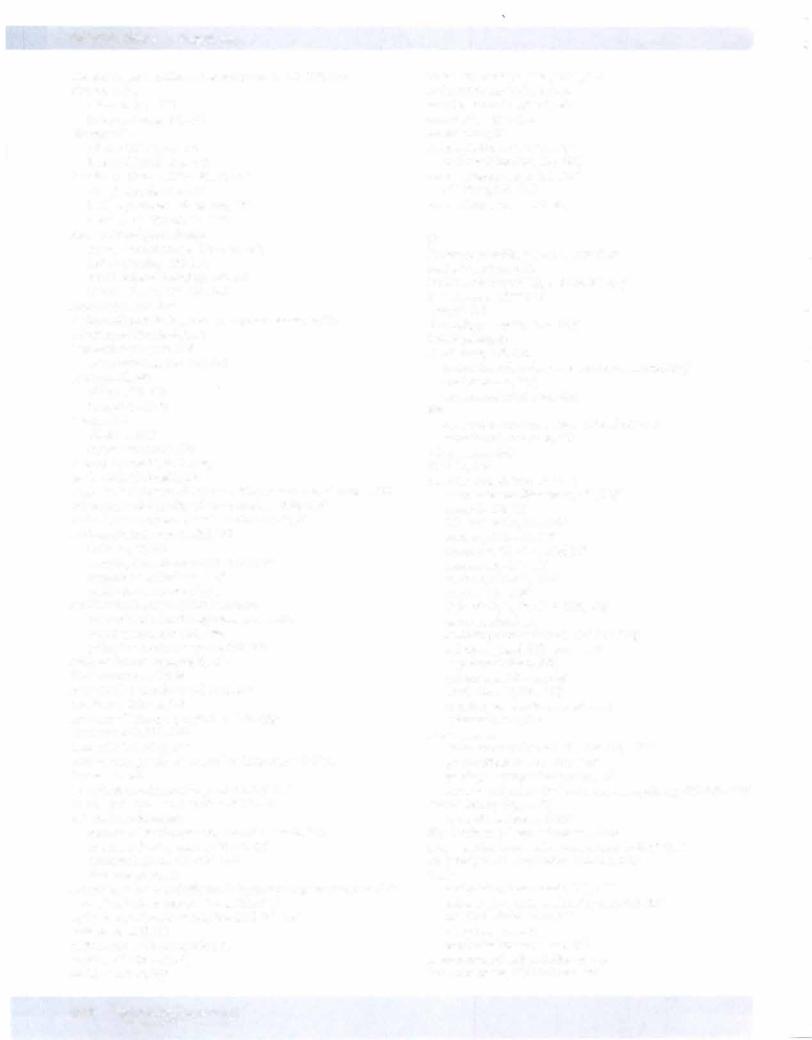
USMLE Step 1 • Physiology
Alveolar oxygen uptake, cardiac output and, 107-108, 107f Alveolar PC02
effect on PA02, 162 factors affecting, 160-161
Alveolar P02
effect ofPAC02 on, 162 factors affecting, 161-162
Alveolarventilation, 138-139, 160-161 at high altitude, 176-177
in high-pressure environment, 177 neural regulation of, 174-176
Alveolar-blood gas exchange
carbon monoxide and, 163-164, 164f factors affecting, 160-162
and Fick law ofdiffusion, 162-163 in normal lung, 159-160, 160f
Amenorrhea, 375-376
Amino acid/protein ingestion, glucagon response to, 316 4-Aminopyridine (4-AP), 29
Anatomic deadspace, 136 composition of, 136-137, 137f
Androgen(s), 362 adrenal, 279, 362 formation of, 375
Anemia, 170 effects of, l72t
oxygen content in, 175 Aneurysm, arterial, 93-94, 93f Angiotensin II (AngII), 203
Angiotensin II receptor blockers (ARBs), effect on renal system, 204 Anion gap,acid-base disturbances and, 247-248, 247f Antiarrhythmic agents, blocking actions of, 40, 42
Antidiuretic hormone (ADH), 269 action of, 10, 271
inappropriate release of, 273-274, 274t regulatory mechanisms, 270f synthesis and release of, 271
Antidiuretic hormone (ADH) secretion
effect ofalcohol andweightlessness on, 272 inappropriate, 273-274, 274t pathophysiologic changes in, 272-274
Antiport (countertransport), 208 Aortic aneurysm, 93f, 94
Aortic bodies, alveolarventilation, 175 Aortic insufficiency, 126
Aortic insufficiency regurgitation, 128, 128f Aortic stenosis, 127, 127f
Apneustic breathing, 176
Arginine vasopressin. SeeAntidiuretic hormone (ADH) Aromatase, 362
Arrhythmias, ECG recordings, 48-51, 48f-50f Arterial pulse pressure variation (PPV), 101 Arteries/Arterial system
acid-base disturbances and, normal values in, 244 aneurysm development in, 93-94, 93f characteristics of, 101-103, lOlf
during exercise, 1 17
Arterioles, afferent and efferent, independent responses of, 198, l99t Ascending limb, in loop of Henle, 229, 230f
Assisted control modeventilation (ACMV), 144 Atelectasis, 148/, 149
ATPase, in muscle contraction, 60 Atrial fibrillation, 50, 50/
Atrial flutter, 50, 50f
410 MEDICAL
Atrial natriuretic peptide (ANP), 272 Atrioventricular (AV) node, 37 Atrophy, endocrine gland, 263 Auscultation sites, 123 Automaticity, 37
Autoregulation, 109-110, l lOf and renal function, 196, 197f
Autoregulatory range, 109, l lOf ofkidney, 195, 197f
Axon action potential, 30, 30f
B
Baroreceptorreflex, 103-104, 103f, 104t Bartter's syndrome, 230
Basic metabolic profile/panel (BMP), 4, 4f Batrachotoxin (BTX), 29
"Bends;• 177
Beta cells, pancreatic islets, 309f Beta-blockers, 42
Bicarbonate, 172-173
in acid-base disturbances evaluation, 244-245, 245f ion formation, l73f
in proximaltubule, 226-227 Bile
compositionand formation of, 398f, 399-400 secretion of, control of, 400
Bile pigments, 399 Bile salts, 399
Blood flowregulation, 109-11 1 arterial-venous differences, 100, lOOf cerebral, 1 12, 1 17
co2 content in, 173, l73f coronary, 1 1 1-112, 117 cutaneous, 1 13-1 14, 1 13f, 1 17 exercise and, 1 16-118 extrinsic, 1 10-111, l lOf
in fetus, 1 15, 1 16f
Fick principle, 107-108, 107f, 109f gastrointestinal, 1 17
intrinsic (autoregulation), 109-1 10, l lOf in lung, regional differences, 180
in pancreatic islets, 309f pulmonary, 1 14-1 15, 116 renal, 1 14, 1 17, 196, 197f
in restingvs. exercising muscle, 1 1 1 splanchnic, 1 13, 114
Blood pressure
baroreceptor reflexand, 103-104, 103f, 104t gravity effects on, 100-101, lOOf
reading, technique for accuracy, 100 renin-angiotensin-aldosterone system regulating, 286-288, 287f
Blood viscosity (v), 89, 89f in vessel resistance, 89, 89f
Blood volume, plasma volumevs., 15-16
Body osmolarity, hydration changes and, 5-6, Sf-Sf, 9t Body temperature regulation, 1 13-114, 1 13f
Bone
and calciumhomeostasis, 328, 328f calcium/phosphate relationship and, 326-327 metabolic disorders of, 335
remodeling sites, 329 weight-bearing stress and, 329
Bone demineralization, indices of, 329 Bone resorption, PTH-induced, 328

Botulinurn toxin, 33 Bowman's space
filtered load in, 201-202
in glomerular filtration, 200, 201 Brain, blood flow regulation in, 1 12 Brain natriuretic peptide (BNP), 272 Breathing
abnormal patterns of, 176 pulmonary events during, 143/
c
Cl8 steroids, 280 Cl9 steroids, 279
C21 steroids, 278, 279f
c wave, in venous pulse tracing, 124, 124/, 125/ Caisson's disease, 177
Calcitonin, 329 Calcitriol (vitamin D)
actions of, 331
in calcium homeostasis, 330-331 metabolism of, 330-331
in regulation ofcalcium and phosphate, 331/ synthesis of, 330
Calcium (Ca2+)
bound vs. free,326, 326/
calcitriol and PTH regulating, 331/ cytosolic, regulation of, 59-60, 59f in distal tubule, 231, 23lf distribution in body, 325, 325/ ECG changes and, 51
effect in tetanic contraction, 61, 62f metabolic disorders of, 332-335
in neuromuscular transmission, 32-33 and phosphate relationship, 326-327 resting membrane potential and, 25
Calcium (Ca2+) channelblockers, 42 Calcium homeostasis
bone and, 328, 328/ vitamin D role in, 330-331
Calcium-sensing receptor (CaSR), 230 Canagliflozin, 227
Capillaries
hydrostatic pressure in, 1 1, 200 permeability of, peripheral edema and, 14
Capillary membrane, as barrier for plasma proteins, 3 Carbamino compounds, 172
Carbohydrates. See CHO (carbohydrate) Carbon dioxide (C02)
COPD patients and, 175
diffusion gradient across membrane, 163 dissolved, 172
transport of, 172-173, 173/ Carbon monoxide (CO), 163-164, 164/
effects of, 171-172, 171/, 172t Carbon monoxide (CO) poisoning, 17lf
effects of, l72t
Carbonic anhydrase inhibitors, 227, 233 Cardiac cycle, 121-125, 121/
pressure-volume loop in, 126, 126f
venous pulse tracing in, 123-125, 124/, 125/ Cardiac muscle
histologic features of, 69t preload factors in, 73-74
and skeletal muscle compared, 62-63, 63f
Index
Cardiac output (CO) determinants of, 96-99
renin-angiotensin-aldosterone system regulating, 286-288, 287f steady-state, 96, 98-99, 99f
Cardiac output (CO)Nenous return (YR) curves, 97-99, 98f, 99f Cardiac shunts, left-to-right, 188-189, 189t
Cardiogenic pulmonary edema, 14 Cardiomyopathy, 80-81
Cardiopulmonary afferents/baroreceptors, 100 Cardiovascular effects
compensatory maternal, in pregnancy, 380 ofthyroid hormones, 344
Cardiovascular system
changes with ventilation, 143-144 organization of, 85, 85f, 87f
systemicvs. pulmonary circuit in, 86, 86t Carotid bodies, alveolar ventilation, 175 Carotid massage, 103
Catecholamines, 283 actions of, 305, 306f
effects on SA nodal cells, 4lf, 42
Cell diameter, conduction velocity and, 31 Cell membrane(s)
as Na2 barrier, 3 skeletal muscle, 56, 56f
Cells ofLeydig, 359f, 360
Central line, placement technique, 100 Central respiratory centers, 175, 176/ Cerebral circulation, 1 12
during exercise, 1 17 Channels, classification of, 20, 21/
NMDAreceptor and, 21, 21/
Chemical-mechanical transduction, in skeletal muscle, 58-59, 58f Chemoreceptors
central, 174-175, 174/ peripheral, 175
Chest wall recoil, 140 Cheyne-Stokes breathing, 176 Chiefcells, 394
Childhood, hormones in, 363 Chloride (CJ-)
in basic metabolicprofile,4 resting membrane potential and, 24
CHO (carbohydrate)
in digestive process, 40lf, 402
effects in insulin-deficient individuals, 319 epinephrine actions on, 306f gastrointestinal absorption of, 403, 403/ insulin effects on metabolism of,311 thyroid hormones and, 344
Cholecalciferol (vitamin D3), 330, 330/ Cholecystokinin (CCK), 397, 397f Cholera toxin, 400
Cholesterol in bile, 399
conversion to pregnenolone, 280
Chronic obstructive pulmonary disease (COPD), 175 Clearance
ofcreatinine. See Creatinine clearance defined, 211
free water, 222
in GFR estimation, 219-220, 220f · of inulin, 220/, 221
ofp-aminohippuric acid, 220/, 221-222 patterns of, 220-223
MEDICAL 41 1
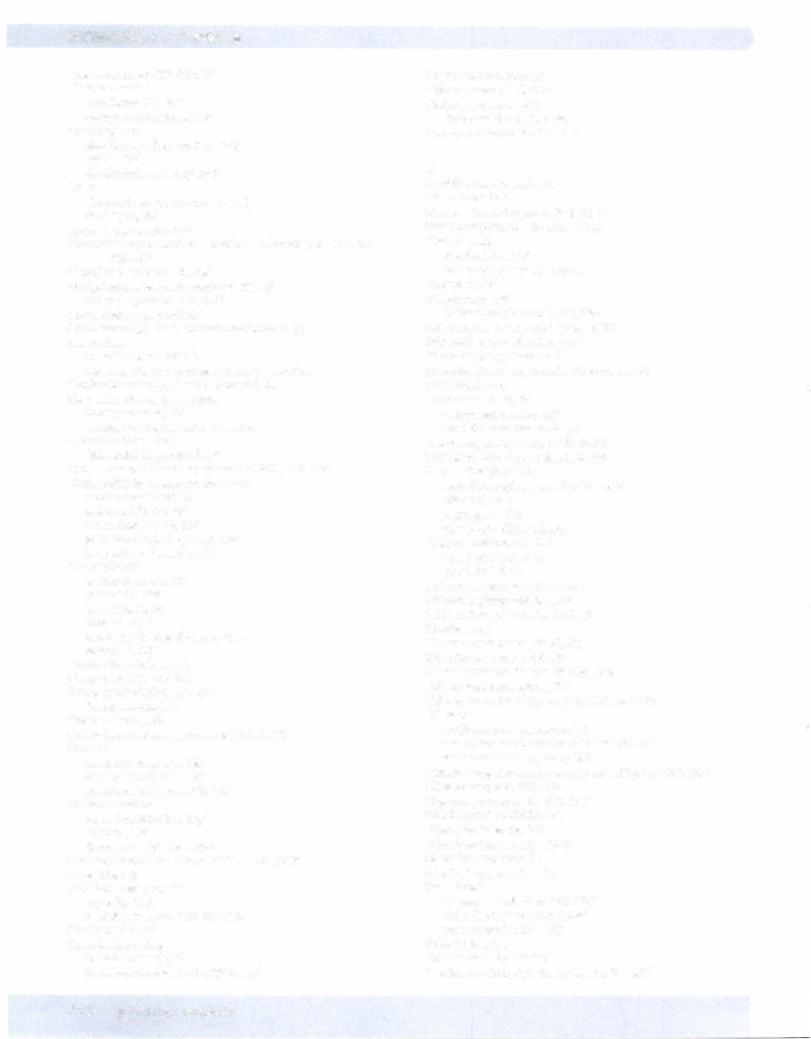
USMLE Step 1 • Physiology
Clearance curves, 220-222, 220f Clearancevalues
calculating, 211-212 example calculations, 212t
Collecting duct
aldosterone effects on, 284, 284f cells in, 232
distal tubule and, 233f, 236f Colon
electrolyte absorption in, 405, 406f motilityin, 392
Coma, hyperosmolar, 320
Compensatory mechanisms, in acid-base disturbances, 245-246, 248-250
Complete heart block, 49, 49f Compliance, ofsystemic vessels, 94--95, 96f
and pulse pressure, 102, 102f Concentration gradient, 22
Conductance (g). See Membrane conductance (g) Conduction
in cardiac tissue, 37-38
neuronal. See Neuronal excitability/conduction Conduction velocity, ofaction potential, 31 Congenital adrenal hyperplasia
consequences of, 301
deficient cortisol secretion and, 294 Conn's syndrome, 293
differential diagnosis of, 294
Continuous positive airwaypressure (CPAP), 145, 145f Contractility, in cardiac muscle, 75-76
cardiac output and, 97 indices of, 75-76, 75f and preload, 75-76, 75f
pressure-volume loops and, 126 in systolic performance, 76
Contraction(s)
cardiac tissue and, 37 gallbladder, 400 isometric, 65, 66 isotonic, 65, 66
in muscle. See Muscle contraction tetanic, 61, 62f
Contraction alkalosis, 227 Cooling mechanisms, 364 Coronary circulation, 111-112
during exercise, 117 Corpus luteum, 373
Corticotropin-releasing hormone (CRH), 283 Cortisol
metabolic actions of, 282 metabolism of, 278, 279f permissive actions of,282-283
Cortisol secretion
controlof,283-284, 283f deficient, 294
disorders of, 290-292, 292t
Countercurrent flow, in loop ofHenle, 228, 229f C-peptide, 309
Creatinineclearance, 221 curvefor,220f
in GFR estimation, 219-220, 220f Cretinism, 348-349
Cross-bridge cycling
in cardiac muscle, 73
in skeletal muscle, 58-59,58f, 61, 62f
Crypt secretion, 400--401 Cushing disease, 289, 292t Cushing syndrome, 289
characteristics of, 290-291 Cutaneous circulation, 113-114
D
D (diffusion constant), 163 Dalton's law, 159
Darrow-Yannet diagrams, Sf-Sf, 9t, 10 Davenport plots, 252-254, 252f-254f Dead space(s)
alveolar, 181, 182f
in respiratorysystem, 136-138 Defecation, 392
Dehydration, 204
diabetes insipidus and, 273t, 274t Deiodination, ofiodinated tyrosine, 341 Delta cells, pancreatic islets, 309f "Demandpump,"heart as, 85
Demyelination/Demyelinating diseases, 31, 36t Denosumab, 334
Depolarization, 23, 25
in hyperkalemia, 23, 23f synaptic transmission and, 32
Descending limb, in loop ofHenle, 229 Dexamethasone suppression tests, 289 Diabetes insipidus (DI)
centralvs.nephrogenic, 272-273, 273t effects of, 274t
nephrogenic, 200 physiologic effects of, 274t
Diabetes mellitus, 317-321 type 1, 318-320, 322t type 2, 318, 322t
Diabetic ketoacidosis (DKA), 320 Diabetic nephropathy, 234, 238 3,4-Diaminopyridine (3,4-DAP), 29 Diarrhea, 406
Diastolicdysfunction, 79-81, 80f Diastolic murmurs, 128f, 129 Diastolic pressure, factors affecting, 102 Diffuse esophageal spasm, 390
Diffusingcapacityofthe lung (DLCO), 163-164 Diffusion
gradient across membrane, 163
rate of, structural features affecting, 162-163 simple, solute transport by, 207
Diffusion impairment, hypoxemia causedby, 185-186, 185f Digestive enzymes, 40lf, 402
Digestiveprocesses,401--402,40lf Dihydropyridine (DHP), 346 Dihydrotestosterone, 362
Dilated cardiomyopathy, 80-81 Dissecting aneurysm, 94 Dissolved oxygen, 167, 167f Distal tubule
aldosterone effects on, 284, 284f andcollectingduct, 233f, 236f transporters in, 231, 23lf
Dobutamine, 110
Driving force. See Net force
Duodenum, electrolyte absorption in, 405, 406f
412 MEDICAL
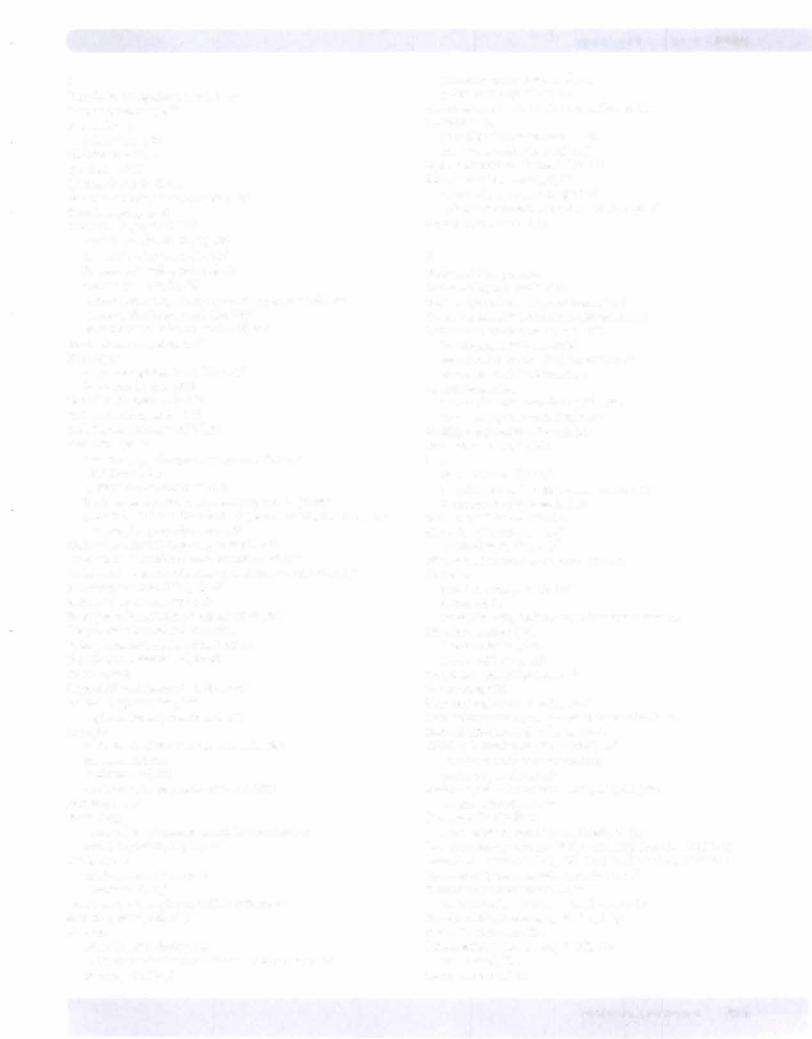
E
EctopicACTH syndrome, 290, 292t Ectopic pregnancy, 377
Edema, 13-14 pulmonary, 149
Effective osmole, 4 Ejaculation, 365 Ejection fraction (EF), 79
Electrical activity, smooth muscle, 389 Electrical synapses, 35 Electrocardiography (ECG)
arryhthmias in, 48-51, 48f-50f in heart block, 48-49, 48f-49f in heart rate estimation, 44f, 45 normal patterns, 43, 43f
reading recordings from, step-wise approach to, 45-48 venous pulse tracing and, 124, 124f
vs. ventricular action potential, 43, 44f Electrochemical gradient, 19
Electrolytes
in gastrointestinal tract, 405, 406f in proximal tubule, 226
Emission ofsemen, 364-365 End products, digestive, 402 End-diastolicvolume (EDV), 79 Endocrine system
compensatory changes in pregnancy, 380-381 disorders of, 263
gastrointestinal tract and, 389t
lipidvs. water-soluble hormones in, 259, 259f, 260t protein-bound and freecirculating hormones in, 260-261, 26lf and receptor properties, 261-262
Endocrine-secreting tumors, pancreatic, 321 Endocytosis, thyroid hormone secretion and, 341
Endometrium, uterine, hormonal maintenance of, 377, 378f End-plate potential (EPP), 32-33
End-systolicvolume (ESV), 79
Energy requirements, in proximal tubule, 227 Enzyme deficiencies, 294-301, 30lt Epinephrine metabolism, 305, 306f, 307 Equilibrium potential, 19, 22-25
Erection, 364
Ergocalciferol (vitamin D2), 330, 330f Essential hypertension, 126
nephron hemodynarnics and, 197 Estrogen
in follicular phase ofmenstrual cycle, 369 formation of, 375
ovulation and, 371
production in pregnancy, 377-379, 378f Euvolemia, 275
Excitability
neuronal. See Neuronal excitability/conduction nodal, control of,41f, 42, 42f
Excitable cell
conductance of ions in, 19 schematic of, 20f
Excitatory postsynaptic potentials (EPSPs), 34 Excretion, renal, 195, l96f
Exercise
arterial system during, 117
effect onventilation and pulmonary blood flow, 183 heart rate in, 96-97
Index
pressure-volume loops and, 126 pulmonary response to, 114
Exercising muscle, blood flowregulation in, 111 Expiration, 139
intrapleural pressure during, 144 lung forces and, 142, 142f, 143f Expiratory reserve volume (ERV), 135
Extracellular fluid (ECF), 3, 3f volume changes in, 5-6, 5f-8f, 9t
volume vs. solute concentration in, 5-6, 5f-8f Extracellular solutes, 4, 4f
F
Facilitated transport, 207 Factitious hypoglycemia, 322t
Familial hypocalciuric hypercalcemia, 230 Fat, effects in insulin-deficient individuals, 319 Female reproductive system, 367-383
lactation and, 381-383, 382f
menstrual cycle and. See Menstrual cycle pregnancy and. See Pregnancy
Female sex steroids
metabolism and excretion of, 374-375 in pregnancy, 377-379, 378f, 380f
Fertility, temperature effect on, 364 Fertilization, ofovum, 377
Fetus
circulation in, 115, 1 16f
growth rates in, thyroid hormones and, 344 hormone development in, 363
Ficklawofdiffusion, 162-163
Fick principle, 107-108, 107f application of, 108, 109f
Filtered load, in Bowman's space, 201-202 Filtration
and absorption, 11-12, llf forces for, 11
renal, 194-195, 196f See also Glomerular filtration Filtration fraction (FF)
factors affecting, 202 in normal kidney, 202
First-degree heart block, 48, 48f 5 -reductase, 360
Flow-volume loops, 155-156, 156f
Fluid compartments, volume measurement in, 15-16 Fluid distribution, within body, 15-16 Follicle-stimulating hormone (FSH), 360
in male reproductive system, 359f spermatogenesis and, 364
Follicular phase, in menstrual cycle, 367, 368f, 369
length variability of, 375 Force. Seealso Net force
summation of, tetanus and, 61, 62f, 63, 63f
Forced expiratoryvolume (FEY1), 151, 151f, 154-155, 154f, 155t
Forced vital capacity (FVC),151, 15lf, 153f, 154-155, 154f, 155t
Force-velocity curve, skeletal muscle, 67, 68f Frank-Starlingmechanism, 74, 74f
ventricular function curves and, 77, 77f, 78 Free circulating hormones, 260-261, 261f Free waterclearance, 222
Functional residual capacity (FRC), 135 function of, 136
Funny current (if), 41
MEDICAL 413

USMLE Step 1 • Physiology
G
Gallbladder contraction, 400 Gas gangrene, 177
Gastric glands, oxyntic, cells of, 394 Gastric motility, 391, 39lf
Gastric secretions, 393-395
acidic.control of, 394-395, 394f ionic composition of, 395, 395f parietal cell, 394, 395f
Gastroesophagealrefluxdisease (GERD), 390 Gastrointestinal tract
absorption in, 403-406, 403/, 404/, 406f circulation during exercise, 117 diarrhea and, 406
digestion processes in, 401-402, 40lf endocrine control of, 389t
motility in, 389-392, 390/, 39lf nervous control of, 388 secretions in, 392-401 structure of, 387-388, 387f
Gitelman's syndrome, 231 Glomerular disease, 201, 205 Glomerular filtration
determinants of, 199-200, 199f materials filtered in, 201 membrane structures and, 201 normal values, 200
Glomerular filtration rate (GFR), 199-200, 199f Angiotensin II and, 203
autoregulation and, 196, 197f clinical estimation of, 219-220, 220f defined, 199
determinants of, 199-200 Glomerulus, membrane structures of, 201 Glucagon, 282
actions on liver, 315 and insulin ratio, 317
secretion of, control of, 316-317, 316f target for action, 315
Glucagonoma, 321
Glucocorticoids
disorders involving, 289-292, 292t physiologic actions of, 282-283
Glucose
clearance curve for, 220f clearance of, 221 counterregulation of, 317, 318f
peripheral uptakeof,insulin and, 310
transport maximum reabsorption of, 212-213, 213f Goiter, 350
Gonadal dysfunction, 365, 366t Gonadotropin-releasing hormone (GnRH), 359f Granulosa cells, 369, 373
Graves' disease, 349
feedback relationships in, 347t Gravity
effect on blood pressure, 100-101, lOOf effect on intrapleural pressure, 179, l79f ventilation-perfusion relationships and, 180
Growth
changes during puberty, 356-357 intrauterine, 353
postnatal, 353
414 MEDICAL
Growth hormone (GH)
indirectanabolic actions of, 355, 355f physiologic actions of, 354, 354f prepubertaldeficiencyin, 353-354 secretion of, control of, 355-356, 356f
H
HARDUP (mnemonic), 248 Heart
with dilatedleft ventricle, 93 function of, 85
Heart block, 48-49, 48f-49f Heart failure, 126
Heart murmurs, 90, 127-130, 128f Heart rate (HR)
cardiac output and, 96-97 estimating, 44f, 45 during exercise, 96-97
Heart rhythm, determining, 44f, 45 Heart sounds, 122-123, 123f Hematocrit, 15, 89
effect on blood viscosity, 89f Hemodynarnics, 87-93, 93f
glomerular, 198, 198f nephron, 197-198, 198/, 199f
Hemoglobin (Hb)
concentration effects, 170, l7lf dissociationcurves, 169-170, 169f-170f
Hemorrhage NSAIDs and, 204
pulmonary response to, 1 15 Henderson-Hasselbalch equation, 252 Henle, loop of, 228-230, 230f Henry's law, 177
High altitude acclimatization to, 177t
effects on respiration, 176-177 hypoxemia and, 185
High-pressure environment, respiration in, 177
Hirsutism, 376
Hormone receptors, 261-262 Hormones
ofadrenal medulla, 305
hypothalamic, effect on anterior pituitary, 266f lipidvs. water-soluble, 259, 259/, 260t measuring levels of, 262
ofpancreatic islets, 309, 309f
protein-bound and free circulating, 260-261, 26lf in regulation ofmenstrual cycle, 367-374 specificity and activity, in endocrine system,261-262 thyroid. See Thyroid hormones
Human chorionic somatomarnmotropin (hCS), 379-380, 380f Human placental lactogen (hPL), 379-380, 380f
Hydration, changes in, 5-6, Sf-Bf, 9t Hydrostatic pressure (blood pressure)
in capillary, 1 1, 200 in interstitium, 12
peripheral edema and, 13
11 -Hydroxylase deficiency, 297-298, 297f-298f, 30lt in congenital adrenal hyperplasia, 301
17 a-Hydroxylase deficiency, 299-300, 299f-300f, 30lt in congenital adrenal hyperplasia, 301
21-Hydroxylase deficiency, 295-296, 295f-296f, 30lt in congenital adrenal hyperplasia, 301
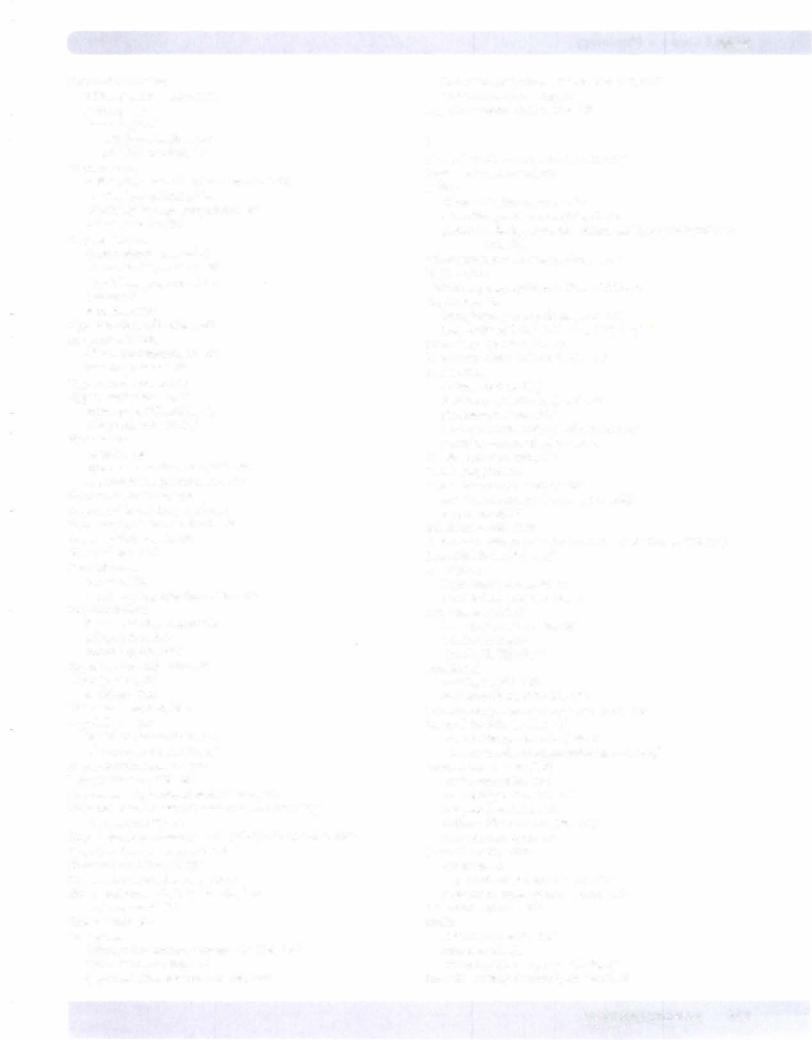
Hyperaldosteronism differential diagnosis of, 294 primary, 293
secondary, 294t
with hypertension, 293 with hypotension, 294
Hypercalcemia
differential diagnosis and treatment of, 333 familial hypocalciuric, 230
ofprimary hyperparathyroidism, 332 related causes of, 332
Hypercortisolism characteristics of, 290-291 differential diagnosis of, 290 establishing presence of, 289 primary, 290
secondary, 290 Hyperfunction, endocrine, 263 Hyperkalemia, 236
K+ concentration in, 23, 23f Na+ channels and, 28
Hyperosmolar coma, 320 Hyperpolarization, 23, 25
action potentialand, 29, 30 in hypokalemia, 23, 23f
Hypertension essential, 126
hyperaldosteronism with, 293-294 nephron hemodynamics and, 197
Hypertonic fluid loss, 7f, 8 Hypertrophic cardiomyopathy, 81 Hypertrophy, endocrine gland, 263 Hyperventilation, 161, 162 Hypervolemia, 275 Hypocalcemia
causes of, 334
ofprimary hypoparathyroidism, 333 Hypocortisolism
differential diagnosis of, 292 primary, 291, 292t secondary, 292, 292t
Hypofunction, endocrine, 263 Hypoglycemia, 321
factitious, 322t Hypogonadism, 365, 366t Hypokalemia, 237
in diabetic ketoacidosis, 320 K+ concentration in, 23, 23f
Hyponatremia, 229, 274-275
Hypopituitarism, 266--267
Hypotension, hyperaldosteronism with, 294 Hypothalamic-anterior pituitary axis, 265-267, 265f
disorders of, 266--267
Hypothalamic-pituitary-gonadal (HPG) axis, 359-362, 359f Hypothyroidism, primary, 348-349
Hypotonic fluid loss, 6f-7f, 8
Hypotonic saline infusion, 7f-:-Bf, 9t
Hypoventilation, 161, 162, 184-185, 184f acute causes of, 185
Hypovolemia, 275 Hypoxemia
diffusion impairment causing, 185-186, 185f high altitude causing, 185
hypoventilation causing, 184-185, 184f
Index
intrapulmonary shunt causing, 186--187, 187f VA/Q mismatch causing, 186
Hypoxic vasoconstriction, 182-183
I
Ileum, electrolyte absorption in, 405, 406f Implantation, ofovum, 377
Indices
ofbone demineralization, 329
of cardiac muscle contractility, 75-76
predictive, for hyperparathyroidism and hypoparathyroidism,
334, 335
Infant respiratory distress syndrome, 149 Inhibins, 362
Inhibitory postsynaptic potentials (IPSPs), 34 Inspiration, 139
intrapleural pressure during, 143-144 lung forces and, 140-141, 14lf, 142f, 147f
Inspiratorycapacity (IC), 135 Inspiratory reserve volume (IRV), 135 Insulin, 310f
actions on liver, 3l7f
deficiency of, individuals with, 319 glucose uptake and, 310
metabolic actions of, 31 1-312, 312f, 313f secretion of, controlof, 314, 314f
Insulin : glucagon ratio, 317 Insulin receptor, 310 Insulin-like growth factors (IGFs)
growth hormone mediated by, 355, 355f
. properties of, 355 Insulinomas, 321, 322t
Intercalated cells, in collecting duct, distal tubule and, 232, 233f Interstitial fluid (ISF), 3, 3f
lnterstitium
hydrostatic pressure in, 12 oncotic (osmotic) force in, 11
Intervals, on ECG, 39
in heart rate estimation, 44f PR. See PR interval
QT, 39, 43, 43f, 44f, 51
Intestine(s)
motility in, 391-392 secretions from,400-401, 400f
Intraalveolar pressure, in respiratorycycle, 142 Intracellularfluid (ICF), 3, 3f
volume changes in, 5-6, 5f-8f, 9t
volume vs. solute concentration in, 5-6, 5f-8f Intrapleural pressure (IPP)
during expiration, 144 during inspiration, 143-144 lung recoil and, 139-140
regional differences in, 179, 179f in respiratory cycle, 142
Intrapulmonary shunt causes of, 187
hypoxemia caused by, 186-187, 187f response to supplemental oxygen, 188f
Intrauterine growth, 353 Inulin
clearance curve for, 220f clearance of, 221
concentration in nephron tubule, 228 Inward rectifying channels (potassium), 38
MEDICAL 41 5

USMLE Step 1 • Physiology
Iodination
ofthyroglobulin, 339
oftyrosine. SeeTyrosine, iodinated Iodine
deficiency of, thyroidal response to, 347, 347f thyroid function and, 338, 339f
Ion channels. See Channels, classification of Ionic equilibrium, 22-25
Islets ofLangerhans, 309, 309f Isometric contraction, 65
maximal, 66 Isotonic contraction, 65 Isotonic fluid
gain, 7f, 8 loss, 6f, 8
J
J point, 44
Jejunum, electrolyte absorption in, 405, 406f
Jugular venous pulse tracing, 125, 125f
Juxtaglomerular apparatus, 285, 286f
K
Kallmannsyndrome, 366t
17-Ketosteroids, urinary, 279
Kidney. SeealsoRenal entries
blood flow regulation in, 1 14, 196, 197f cortical vs. medullaryorganization of, 193, 194f flow distribution in. See Filtration fraction (FF) functions of, 193
potassium secretion and excretion by, 235, 236f
L
Lactation, 381-383, 382f
Lambert-Eaton syndrome, 33 Laminar flow
characteristics of, 90, 90f Reynold's number and, 90-91
Latrotoxin, 33
Law of Laplace, 93, 148, 148f Left-to-right cardiac shunts, 188-189, 189t
Length-tension curves. See Tension curves, in skeletal muscle Leydig cells, 359f, 360
Liddle's syndrome, 232 Ligand-gated channels, 20, 2lf
NMDA receptor and, 2lf, 22
synaptic potentials produced by, 33, 34f Lipids
gastrointestinal absorption of, 403-404, 404f metabolism of, thyroid hormones and, 344
Lipid-soluble hormones
in endocrine system, 259, 259f, 260t transport of, 260, 26lf
-Lipotropin, 284 Liver
epinephrine actions in, 305, 306f glucagon actions on, 315 insulin actions on, 313f, 3l7f
role in endocrine system, 260-261, 26lf Load, skeletal muscle, 67, 68f
Local anesthetics, 29
Loop diuretics, 229, 230 Loop ofHenle, 228-230, 230f
Lower esophageal sphincter (LES), 390, 390f Lung. See also Pulmonary entries
alveolar-blood gas exchange in, 159-164 normal, review of, 183, 184f ventilation-perfusion differences in, 179-183 "west" zones of, 179
Lung compliance, 146-149, 146f, 147f
Lung inflation curve, 146f Lung mechanjcs, 139-143
underresting conditions, 140, 141f Lung recoil
components of, 148-149, 148f and intrapleuralpressure, 139-140
Lung volumes
and capacities, 135, 135f mechanical effect of, 150, 150f spirometry and, 135
Luteal phase, in menstrual cycle, 367, 372f, 373 Luteinizing hormone (LH)
in male reproductive system, 359f, 360, 362-363, 362f in menstrual cycle, 373
in spermatogenesis, 364 Lymphatics, 12 Lymphedema, 14
M
Male reproductive system, 359-366
age-related hormonal changes in, 362-363, 362f, 363f erection, emission, and ejaculation, 364-365 gonadal dysfunction in, 365, 366t
hormonal secretion control in, 359-360, 359f spermatogenesis in, 364
testicularfunction in, 36lf
Mammary gland, growth and secretion, 381 Mean arterial pressure (MAP)
factors affecting, 100, 102-103 in systemic circulation, 91-92
Mean electrical axis (MEA), 46 left axis deviation, 47, 47f ranges, 46f
right axis deviation, 47f, 48
Mean systemic filling pressure (Psf), 95, 98 steady-state cardiac output and, 99, 99f Medullarycenters, of respiration, 175, l76f
Membrane conductance (g), 19 axon action potential and, 30, 30f
neuron action potential and, 29-30, 29f Membrane potential (Em), 19
polarization and, 23, 25f resting, 23-25
Menses, onset of, 367, 374, 374f
Menstrual cycle
follicular phase length variability in, 375 irregularities of, 375-376
monitoring of, 375 phases of, 367-374
Metabolic acidosis, 244, 245, 245t, 255 compensatory mechanisms in, 249 diagnosticflowchart for, 250f elevated vs. non-elevated gap, 247-248 respiratorycompensation in, 246
Metabolic alkalosis, 244, 245, 245t, 255-256 compensatory mechanisms in, 249-250 diagnostic flow chart for, 250f respiratorycompensation in, 246
416 MEDICAL
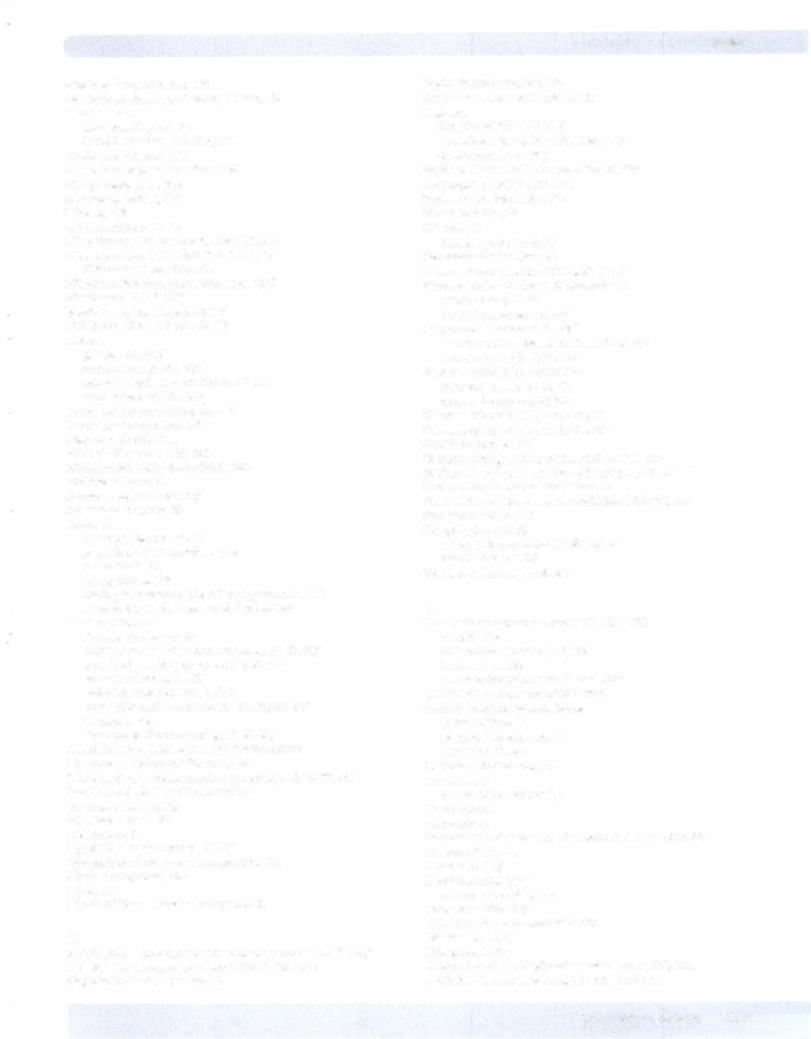
Metabolic bone disorders, 335
Metabolic mechanism, ofautoregulation, 109 Metabolic rate
alveolar PC02 and, 161 thyroid hormones affecting, 343
Metabolic syndrome, 318 Metabolites,inproximal tubule, 226 Methyl testosterone, 362 Metyrapone testing, 290
Micelles, 399 Microcirculation, 11-12
Migrating myoelectric complex (MMC), 392 Mineralocorticoid disorders, 293-294, 294t
differential diagnosis of, 294
Mitra! insufficiency regurgitation, 130, 130/ Mitra! stenosis, 129, 129/
Mobitz type I heart block, 48, 49/ Mobitz type II heart block, 49, 49/ Motility
gastric, 391, 391/
small intestinal, 391-392
smooth muscle characteristics and, 389 swallowing and, 390, 390f
Motor activity, smooth muscle, 389 Mucosa, gastrointestinal, 387 Mucous neck cells, 394 MUDPILES (mnemonic), 248
Miillerian inhibiting factor (MIF), 363 Multiple sclerosis, 31
Murmurs, 90, 127-130, 128/ Muscarinic receptors, 33 Muscle(s)
histologic features of, 69t nonstriated. See Smooth muscle red vs. white, 68
of respiration, 139
resting vs. exercising, blood flow regulationin, 111 striated. See Cardiac muscle; Skeletal muscle
Muscle contraction ATPases involved in, 60
cardiac andskeletal muscle compared, 62-63, 63f cross-bridge cycling in, 58-59, 58f, 61, 62/ isotonic vs. isometric, 65
and relaxation sequence, 59f, 60
summation andrecruitmentin, 61, 62f, 63, 63f tetanic, 61, 62/
time course of events during, 60-61, 61/ Muscle length-tension curves. See Tension curves Muscle mass, androgen effects on, 364
Muscle preload, cardiac muscle contractility and, 75-76, 75f Muscle twitch. See Muscle contraction
Muscularis externa, 388 Myasthenia gravis, 33 Myelination, 31
Myofibril, ultrastructure of, 55, 55f Myogenic mechanism, ofautoregulation, 109 Myogenic responses, 196
Myosin, 57
MyosinATPase, in muscle contraction, 60
N
Na+/K+ ATPase pump, resting membrane potential and, 24, 24/ Na+-K+-2C1- transporter,in loop ofHenle, 229-230
Negative feedback regulation, 10
Index
Nephritic syndrome, 201, 205 Nephrogenic diabetes insipidus, 200 Nephron
function of, 194-196, 196/ hemodynamicsof, 197-198, 198f, 199/ structuresof, 193, 194/
Nephron tubule, inulin concentration in, 228 Nephropathy, diabetic, 234, 238
Nephrotic syndrome, 201, 205 Nernst equation, 22
Net force, 19
Nernst equation and, 22 Neuromuscularblockers, 33 Neuromuscularjunction (NMJ), 32-33, 32/ Neuromuscular (cholinergic) transmission
events during, 32-33 nicotinicsynapses and, 32/
Neuron action potential, 29, 29f
membrane channels involved in, 29-30, 29f refractoryperiods of, 31, 3lf
Neuronal excitability/conduction decreased, causes of, 35, 35t increased, causes of, 36, 36t
Neuronal nicotinic (NN) receptors, 33 Neurons, synapses between, 33-34, 34/ Nicotinic synapses, 32/
Nitrogen (NaH2) toxicity ???chemical symbol, 175 NMDA (N-methyl-D-aspartic acid) receptor, 21, 21/ Non-cardiogenic pulmonary edema, 14
Noninvasive positive-pressure ventilation (NIPPV), 144 Non-pitting edema, 13
Norepinephrine (NE)
effect on sinoatrial nodal cells, 41f, 42 vasodilation and, 93
NSAIDs, hemorrhage and, 204
0
Obstructive pulmonary disease, 153, 153f, 155t chronic, 175
flow-volume loops in, 156, 156/ treatment of, 153
vs. restrictive pulmonary disease, l55t 1,25 di-OH D3' secretion of, 330,330/ Oncotic (osmotic) pressure/force
in interstitium, 11 peripheral edema and, 13 ofplasma, 12,200
Orthostatic intolerance, 100 Osmolality, 3
measuredvs. estimated, 5 Osmolar gap, 5
Osmolarity, 3
Osmolarity, body hydration changes and, 5-6, 6f-8f, 9t, 227 Osmole, effective, 4
Osmosis, 3--4, 4/ Osteoblasts, 328, 328/
in bone remodeling, 329 Osteoclasts, 328, 328/
Osteocytes, in bone remodeling, 329 Osteomalacia, 335
Osteoporosis, 335
Ovary, effect of 17 a-hydroxylase deficiencyin,300, 300f Ovulation, in menstrual cycle, 367, 369, 370f, 371
MEDICAL 417

USMLE Step 1 • Physiology
Ovum
implantation of, 377
pickup andfertilization of, 377 Oxygen (02)
alveolar uptake, 107-108, l07f deliveryof, Fickprinciple and, 108, l09f
diffusion gradient across membrane, 163 supplemental, shunt responseto, 187, 188f toxicityof, 175
transportof, 167-172
Oxygen (02) consumption, Fick principle and, 108, l09f Oxygen (02) content, 167
effects ofHb contenton, 170, 17lf in hemoglobin, 168-169
Oxygenation, oftissue, 108, l09f coronary, 111-112
Oxygen-Hb dissociation curves, 169-170, l69f-l70f shifts in, 170, l70f
Oxyhemoglobin, 168
Oxyntic gastric glands, cells of, 394 Oxytocin, 381, 382
p
PSO' 170
P wave, 43,43f,44f p-aminohippuric acid (PAH)
clearance curve for,220f clearanceof,221-222 secretionof,213-216, 214f
Pancreas
endocrine, 309-322 endocrine-secretingtumors of, 321
exocrine, secretions from. See Pancreatic secretions Pancreatic secretions, 395-397
control of, 397, 397f enzymaticcomponents, 396
fluid and electrolyte components, 397 Parallel circuits, in systemic circulation, 91
Parasympathetic agents, effects on sinoatrial nodal cells, 4lf,42, 42f,44f
Parasympathetic nervous system, gastrointestinal tract, 388 Parathyroid hormone (PTH), 327-328
actionsof, 327-328, 328f bone resorption induced by, 328
andplasma calcium relationship, 327, 327f in regulation ofcalcium and phosphate, 331
Parathyroid hormone-related peptide (PTHrP), 328 Parietal cell secretions, 394, 395f
substances stimulating, 395f Partial pressure ofgas
in ambient air, 159 Dalton's law of, 159
gradient across membrane, 163 in inspired air, 159-160, l60f
Parturition, 381
Peripheral circulation, regulation of, 109-111 Peripheral edema, 13-14
Peristalsis, 390,390f
Permeability, capillary,peripheral edema and, 14 Pesticides, 33
Pheochromocytoma, 307 Phosphate, 325
calcitriol andPTH regulating, 33lf and calcium relationship, 326-327 metabolic disorders of, 332-335
Phospholipids, in bile, 399 Physical conditioning, effects of, 118 Physiologic dead space, 138
Pinocytosis, thyroid hormone secretion and, 341 Pitting edema, 13
Pituitary
anterior. See Hypothalamic-anterior pituitaryaxis posterior. See Posterior pituitary
Pituitary adenomas, 267, 290
Pituitary hyperthyroidism, feedback relationships in,347t Pituitary hypogonadism, 366t
Pituitary hypothyroidism, feedbackrelationships in, 347t Plasma
bloodvolume vs. plasmavolume, 15-16 measuring hormone levelsin,263 oncotic (osmotic) pressure of, 12, 200
Plasma anion gap (PAG), 247-248, 247f Plasma calcium, 326, 326f
and PTH relationship, 327, 327f Plasma proteins, 4 Pneumothorax, 145-146 Poiseuille equation, 87, 87f Polycystic ovarysyndrome, 376 Polycythemia, 170
effects of, 172t Polydipsia
physiologic effects of,274t primary, effects of, 274t
Positive end-expiratorypressure (PEEP), 144 Positive-pressure ventilation, 144-145, l45f
noninvasive, 144 Posterior pituitary, 269-275
hormones of, 269
neural control mechanism of, 270f Postmenopausal women, hormonal changes in, 366t Postnatal growth, 353
Postsynaptic potentials, 34 Potassium (K+)
acid/base disorders of, 236-237 aldosterone secretion and, 288 balance in body, 234-235,236, 236f ECG changes and, 51
effects in insulin-deficient individuals, 319 ICF and ECF distribution of, 235, 235f insulin effects on, 312f
repolarizationand, 30
restingmembranepotential and, 23 secretion and excretion by kidney, 235, 236f
Potassium (K+) channelblockers,40 Potassium-sparing diuretics, 232
PR interval, 43, 43f, 46, 48-49, 48f-49f
In Wolff-Parkinson-White syndrome, 50, 50f Pregnancy, 377-381
ectopic, 377
hormonal changes during, 379-380, 380f maternal compensatory changes during, 380-381 steroids during, 378f
Pregnenolone, 280 Preload
cardiac muscle, 73-76, 75f cardiac output and, 97 skeletal muscle, 65, 66f
Pressure differential, pulmonaryvs. systemic circulation, 86 Pressure gradients, hemodynamic, 87, 88f, 89
venous, 95, 96f
418 MEDICAL
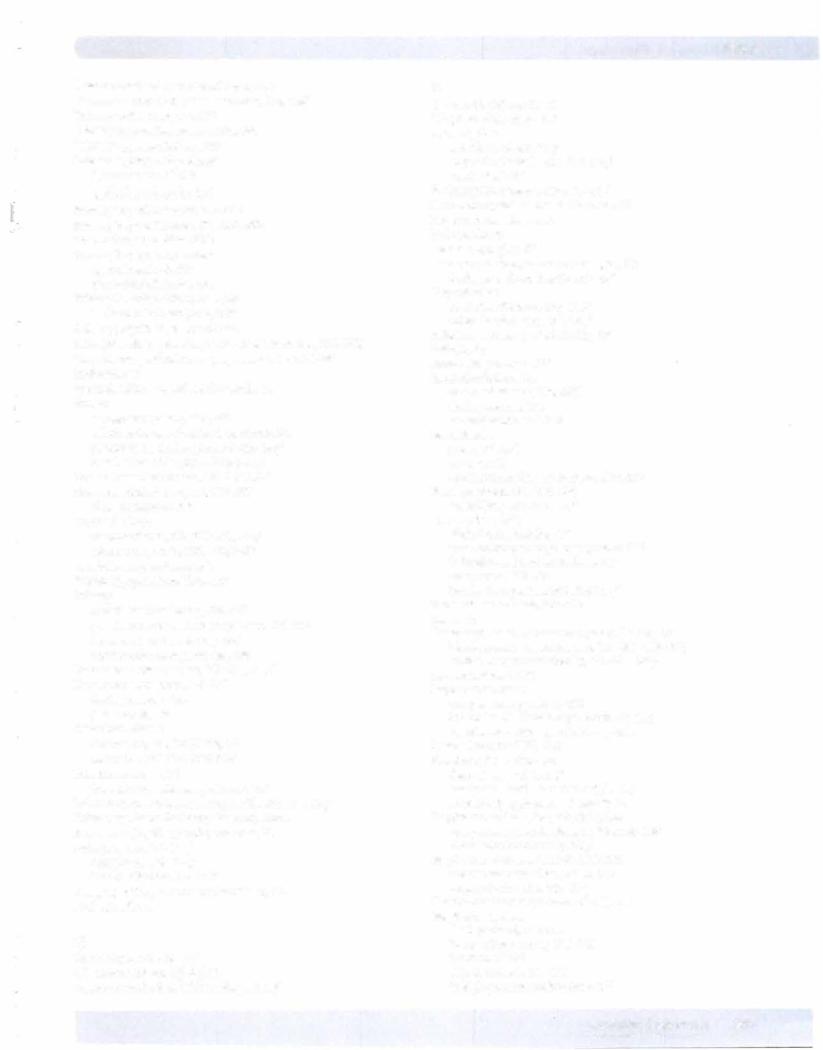
Pressure overload, in ventricular muscle, 79 Pressure-volume loops, left ventricular, 126, 126/ Primary active transport, 208 Primary hyperaldosteronism, 293, 294 Primary hypercortisolism, 290 Primary hyperparathyroidism
hypercalcemia of, 332 predictive indices for, 334
Primary hyperthyroidism, 349-350 Primary hypocortisolism, 291, 292, 292t Primary hypogonadism, 366t Primary hypoparathyroidism hypocalcemia of, 333 predictive indices for, 334 Primary hypothyroidism, 348-349 feedback relationships in, 347t Primary polydipsia, effects of, 274t Principal cells, in collecting duct, distal tubule and, 232, 233/ Progesterone production, in pregnancy, 377-379, 378/ Prolactin, 344 Prostaglandins, renal blood flow and, 204 Protein in digestive process, 40lf, 402 effects in insulin-deficient individuals, 319 gastrointestinal absorption of, 403, 403/ metabolism of, insulin effects on, 311 Protein-bound hormones, 260-261, 261/ Protein-mediated transport, 207-209 characteristics of, 208 Proximal tubule reabsorption in, 200, 210-211, 210/ solute transport in, 225, 225f, 228/ Pseudohermaphroditism, 365 Pseudohypoparathyroidism, 333 Puberty growth changes during, 356-357 growth hormone deficiency prior to, 353-354 hormone secretion during, 363 reproductive changes during, 356 Pulmonary capillary gases, 159-160, 160/ Pulmonarycirculation, 114-115 during exercise, 116 pressures in, 86t Pulmonary disease obstructive, 153, 153f, 155t, 175 restrictive, 154-155, 154f, 155t Pulmonary edema, 14 in respiratory distress syndrome, 149 Pulmonary function test/testing (PFT), 135, 152, 153/ Pulmonary shunt. See Intrapulmonary shunt Pulmonary (capillary) wedge pressure, 74 Pulse pressure, 101, lOlf compliance and, 102/ factors affecting, 102, 102/ Pumping action, in coronary blood flow, 1 12 Purkinje cells, 37
Q
QRS complex, 43, 43f, 44f
QT interval, 39, 43, 43f, 44f, 51
Quadrant method, in ECG reading, 47, 47f
|
Index |
R |
|
R wave, 43, 43f, 44f, 45-46 |
|
"Rapture of the deep;' 177 |
|
Reabsorption |
|
net effects of, 216, 217/ |
|
in proximal tubule, 210-211, 210/ |
|
renal, 195, 196/ |
|
Reabsorption systems, 212-213, 213/ |
|
Recruitment, skeletal muscle force and, 61 |
|
Red blood cell volume, 15 |
|
Red muscle, 68 |
|
Reflux esophagitis, 390 |
|
Refractory periods, action potential, 31, 3lf |
|
during muscle contraction, 63, 63f |
|
Regurgitation |
|
aortic insufficiency, 128, 128/ |
|
mitral insufficiency, 130, 130/ |
|
Relative refractory period, 31, 3lf, 63f |
|
Relaxin, 381 |
|
Renal artery stenosis, 197 |
|
Renal circulation, 114 |
|
autoregulation of, 196, 197/ |
|
during exercise, 118 |
|
prostaglandins and, 204 |
|
Renal failure |
|
acute, 237-238 |
|
chronic, 238 |
|
and secondary hyperparathyroidism, 334 |
|
Renal processes, 194-196, 196/ |
|
quantifying, 210-211, 210/ |
|
Renal system, 194/ |
|
clinical correlates for, 204 |
|
compensatory changes in pregnancy, 380 |
|
in insulin-deficient individuals, 319 |
|
overview of, 193-197 |
|
tubular transport in, 209, 209f, 210/ |
|
Renal tubular acidosis, 233-234 |
|
Renin, 10 |
|
Renin-angiotensin-aldosterone system (RAAS), 10 |
|
blood pressure regulation and, 103, 286-288, 287/ |
|
cardiac output regulation by, 286-288, 287/ |
|
Repolarization, 27, 28f |
|
Reproductive system |
|
changes during puberty, 356 |
|
in females. SeeFemale reproductive system |
|
in males. See Male reproductive system |
|
Residual volume (RV), 135 |
|
Resistance, hemodynamic |
|
determinants of, 88, 88f |
|
steady-state cardiac output and, 99, 99f |
|
whole body application of, 88f,89-90 |
|
Respiratory acidosis, 244, 245, 245t, 254 |
|
compensatorymechanisms in, 245, 248-249 |
|
diagnostic flow chart for, 250/ |
|
Respiratory alkalosis, 244, 245, 245t, 255 |
|
compensatory mechanisms in, 246 |
|
diagnostic flow chart for, 250/ |
|
Respiratory distress syndrome (RDS), 149 |
|
Respiratory system |
|
dead spaces of, 136-138 |
|
forces acting on lung, 139-140 |
|
function of, 135 |
|
at high altitude, 176-177 |
|
in high-pressure environment, 177 |
|
M EDICAL |
419 |

USMLE Step 1 • Physiology
muscles of, 139
positive-pressure respiration and, 144-145, 145/ Respiratoryzone, 136-137, 137/
Restingmembranepotential, 23-25 non-nodal cardiactissue, 38
Resting muscle, blood flow regulation in, 1 1 1 Restrictive cardiomyopathy, 81
Restrictive pulmonary disease, 154-155, 154f, 155t diffusion impairment in, 186
flow-volume loops in, 156, 156/ obstructive pulmonarydisease vs., 155t
Reynold's number, laminar and turbulent flow and, 90-91
Rickets, 335
Right atrial pressure (RAP),95, 98, 98f
Ryanodine receptor (RyR), 59
s
S wave, 43, 43f, 44/
Salivary secretions, 392-393, 393/
Salts, in bile, 399 Sarcomeres
functional proteins of, 56-57, 56f organization of, 55, 55f
preload and, 65 Sarcoplasmic reticulum
Ca2+ release regulatedby, 59-60, 59f ultrastructure of, 56, 56f
Sax:itoxin (STX), 29 Scrotum, 364
Secondary active transport, 208-209, 209f, 210f Secondaryhyperaldosteronism, 294t
differential diagnosis of, 294 with hypertension, 293 with hypotension, 293
Secondary hypercortisolism, 290 Secondary hyperparathyroidism predictive indices for, 335
renal failure and, 334 vitamin D deficiency and, 334
Secondary hypocortisolism, 292, 292t Secondary hypoparathyroidism
predictive indices for, 335 vitamin D excess in, 334
Second-degree heartblock, 48-49, 49f Secretin, 397, 397/
Secretion(s)
gastric. See Gastric secretions net effects of, 216, 217/
in proximal tubule, 213-216, 227 renal, 195, 196/
salivary, 392-393, 393/
smallintestinal, 400-401, 400f Semen, emission of, 364-365
SERCA (sarcoplasmic endoplasmic reticulum calcium ATPase), in muscle contraction, 60
Series circuits
in nephron hemodynarnics, 197-198, 198/ in systemic circulation, 85, 91
Serosa, gastrointestinal, 388 Sertoli cells, 359f, 360
spermatogenesis and, 361 Sheehan syndrome, 267 Shunt/shunting
of blood in heart, 188-189, 189/
420 MEDICAL
and dead space, 181, 182/ left-to-right, 188-189, 189/ consequences of, 189t
pulmonary. See Intrapulmonary shunt Signal transduction mechanisms, 259
lipidvs. water-soluble hormones, 259f Sinoatrial (SA) node, 37
action potential,42, 43f parasympathetic effects on, 41f, 42, 42f
Skeletal muscle
blood flow regulation in, 109-1 1 1, 1 13/ Ca2+regulation in, 59-60, 59f
and cardiacmuscle compared, 62-63, 63/ epinephrine actions in, 305
during exercise, 118 force in, altering, 60-61 histologic features of, 69t insulinactions on, 313f
length-tension curves, 65-66, 66f
mechanical response to electrical events in, 60-61, 61f preload and afterload, 65
structure-function relationships of, 55-60 white vs. red, 68
Skin, blood flow regulation in, 113-1 14 Small intestine
motility in, 391-392 secretions of, 400-401, 400f
Smooth muscle characteristics of, 389 histologic features of, 69t
Sodium (Na+) clearance of, 222-223
depolarization phase and, 27-29
effects in insulin-deficient individuals, 319 resting membrane potential and, 24-25, 25f
Sodium (Na+) channelblockers, 40
Sodium chloride (NaCl), in distaltubule, 231, 231/ Solute concentration
changes in, 5-6, 5f-8f, 9t
extracellular and intracellular volume vs., 5-6, 5f-8f Solute transport, 207
inloop ofHenle, 228-230, 230/ mechanisms of, 207
net effects of, 216, 217/ protein-mediated, dynamics of, 207-209 in proximal tubule, 225, 225f
tubularreabsorption and, 212-213, 213/ tubularsecretion and, 213-216
Solutes extracellular, 4, Sf
renal handling of, 216, 217/ Spermatogenesis
Sertoli cells and, 361 temperature and, 364
Splanchnic circulation, 1 13, 1 14 Splay, in reabsorptioncurve, 213, 213/ ST segment, 43, 43f, 44/
ECG changes and, 51 Starling equation, 12 Starling forces, 1 lf
Steady-state cardiac output, 96, 98-99, 99f Stenosis
aortic, 127, 127/ mitral, 129, 129/ renal artery, 197
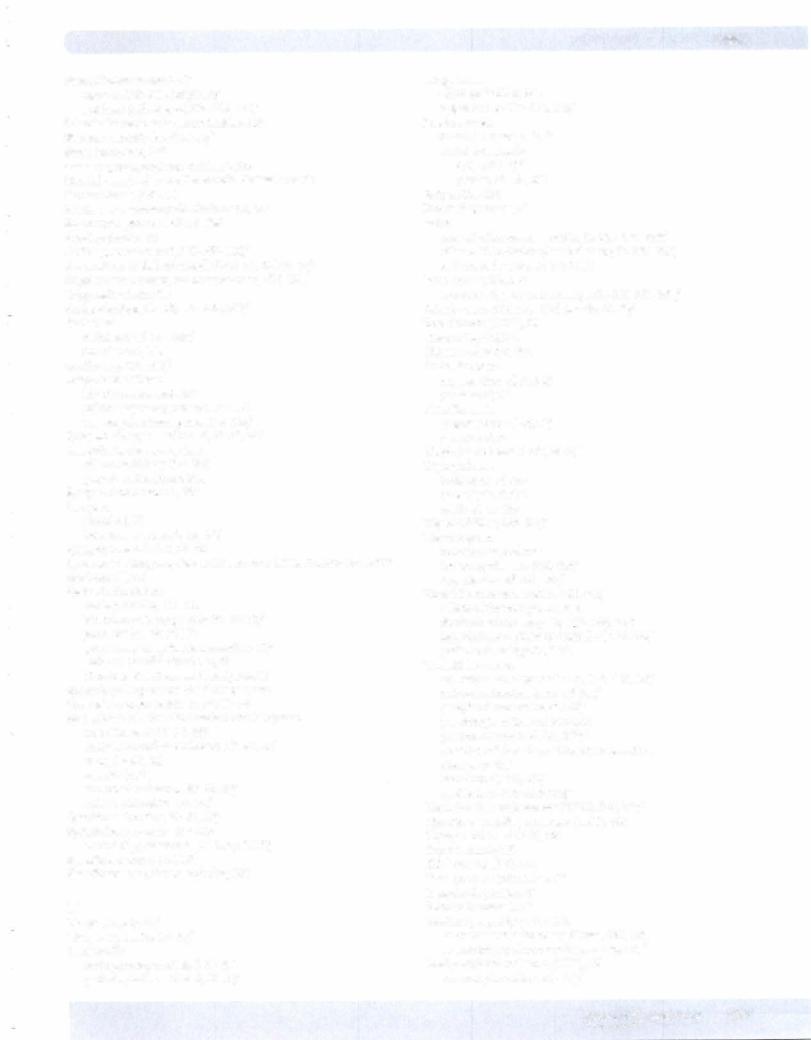
Steroid hormone synthesis regional, 280-282, 280f, 28lf
synthetic pathways of,278-280, 278f Stimulation tests, in hypercortisolism, 289 Stomach, motilityin, 391, 39lf
Stress hormones, 282
Stress response, angiotensin II and, 203
Striated muscle. See Cardiac muscle; Skeletal muscle Stroke volume (SV), 79
Strokework, coronarycirculation and, 1 12 Submucosa, gastrointestinal, 388 Succinylcholine, 33
Suckling, lactation and, 382-383, 382f Summation, ofskeletal muscle force, 61, 62f, 63, 63f Supplemental oxygen, shunt response to, 187, 188f Suppression tests, 289
Surface tension, alveoli, 148-149, 148f Surfactant
deficiencyof, 149, 149f functions of, 149
Swallowing, 390, 390f Swan-Ganz catheter
blood pressure and, 107 pulmonarywedge pressure and, 74 venous pulse tracing and, 125, 125f
Sympathetic agents, effects of,41-42, 4lf Sympathetic nervous system
effects on kidney, 202-203 gastrointestinaltract, 388
Symport (cotransport), 207 Synapses
electrical, 35
between neurons, 33-34, 34f Synaptictransmission, 32-35
Syndrome ofinappropriateADH secretion (SIADH), 273-274, 274t Syndrome X, 318
Systemic circulation during exercise, 1 17-1 18
hemodynamics applied to, 9 1-92, 93f pressures in, 86t, 88f, 89
pulmonaryvs. systemic circulation, 87f series vs. parallel circuits in, 9 1 structure-function relationships of, 86
Systemic pulse pressure. See Pulsepressure Systemicvascularresistance (SVR), 76 Systemicvessels.See also Arteries/Arterial system
compliance of, 94-95, 96f
laminar vs. turbulent flow in, 90-91, 90f veins, 94-95, 96f
velocityin, 90
andvessel resistance, 87-90, 87f wall tension of, 93-94, 93f
Systolic dysfunction, 79-81 , 80f Systolic heart sounds, 122-123
second (S2), abnormal splitting of, 1 23f Systolic murmurs, 127, 1 30
Systolic pressure, factors affecting, 101
T
T wave, 43, 43f, 44f
Tachyarrhythmias, 97, 97f Tachycardia
endogenously mediated, 96--97 pathologically mediated, 97, 97f
Index
Temperature
effecton fertility, 364 regulation of, 1 13-1 14, 1 13f
Tension curves
in cardiac muscle, 74, 74f in skeletal muscle
active, 66, 66f passive, 65-66, 66f
Teriparitide, 334 Terminal cysternae, 56 Testes
control ofhormone secretion in, 359-360, 359f effect of 1 7 a-hydroxylase deficiencyin, 300, 300f endocrine function of, 36lf, 362
Testosterone, 279, 362
secretion of, age-related changes in, 362-363, 363f Tetanic contractions, skeletal muscle, 6 1 , 62f Tetrodotoxin (TDX), 29
Theca cells, 369, 373 Thiazine diuretics, 23 1 Thickfilaments
organization of, 56, 56f proteins of,57
Thin filaments organization of, 56, 56f proteins of, 57
Third-degree heartblock, 49, 49f Thyroglobulin
iodination of, 339 proteolysis of, 341 synthesis of, 339
Thyroid follicle, 337, 337f Thyroid gland
function tests of, 346 iodine uptake and, 338, 339f organization of, 337, 337f
Thyroid hormone secretion, 341, 34lf effects ofthyrotropin on, 346
feedback relationships in, 345, 345f, 347t hypothalamic-pituitary control of, 345, 345f pathologic changes in, 347t
Thyroid hormones
activation anddegradationof, 342-343, 343f active and inactive forms of, 340f peripheral conversion of,343f
physiologic actions of, 343-344 plasma transportof, 342, 342f
secretion of. See Thyroidhormone secretion storage of, 339
structure of, 340, 340f synthesis of,338-339, 338f
Thyroid-releasing hormone (TRH), 345, 345f Thyroid-stimulating hormone (TSH), 346 Thyroperoxidase (TPO), 339 Thyrotoxicosis, 350
Tidalvolume (VT), 135 Titan protein dysfunction, 62 Torsades depointes, 39 Total bodywater, 3, 3f
Total lung capacity (TLC), 135
in obstructive pulmonary disease, 1 53, 153f in restrictive pulmonary disease, 1 55, 155f
Totalperipheralresistance (TPR), 76 baroreceptorreflexand, 103f
MEDICAL 421
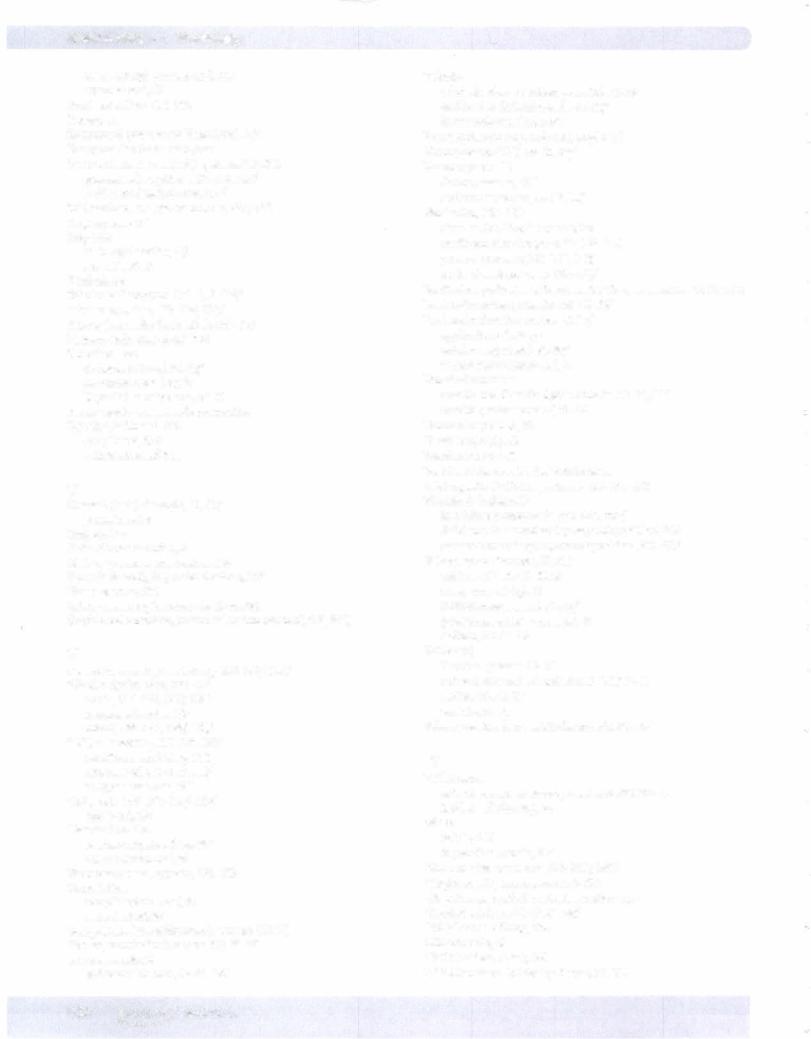
USMLE Step 1 • Physiology
mean arterial pressure and, 1 03 overload and, 97
Total ventilation, 1 36, 138 Tracers, 15
Transmural pressure gradient (PTM), 140 Transport. See Active transport
Transport maximum (TM) systems, 212-213 glucose reabsorption, 2 1 2-213, 2 1 3f PAH secretion, 2 1 3-216, 214f
Triglycerides, in digestive process, 401f, 402 Tropomyosin, 57
Troponin
actin regulated by, 56f subunits of, 57
T-tubule, 56
Tubular reabsorption, 212-213, 213f Tubular secretion, 2 1 3-216, 214f Tubuloglomerular feedback (TGF), 195 Tumors, endocrine gland, 263 Turbulent flow
characteristics of, 90, 90f murmurs causedby, 90 Reynold's number and, 90-91
Twitch tension. See Muscle contraction Tyrosine, iodinated, 339
coupling of, 339 deiodination of, 341
u
Ungated (leak) channels, 20, 2lf potassium, 38
Uniport, 207
Units ofconcentration, 4
Units ofpressure, lung system, 139 Urate (uric acid), inproximal tubule, 227 Urea clearance, 223
Urine, measuring hormone levels in, 263
Uterine endometrium, hormonal maintenance of, 378, 378f
v
vwave, in venous pulse tracing, 124, 124f, 125f Valvular dysfunction, 126-130
aortic, 127-128, 127f, 128f considerations in, 127 mitral, 129-130, 129f, 130f
VAIQ mismatches, 1 79-183, 1 8 lf conditions exhibiting, 186 extremes of, 1 8 1-182, 182f ashypoxemiacase, 186
VA/Q ratio, 180--182, 18lf, 182f aging and, 183
Vascular function
cardiac output and, 98, 98f venous return and, 95
Vasoconstriction, hypoxic, 182-183 Vasodilation
norepinephrine and, 93 uncontrolled, 93
Vasopressin. See Antidiuretic hormone (ADH) Vectors,ventricular function, 77f, 78-79 Veins, systemic, 94
andvenous return, 94-95, 96f
422 MEDICAL
Velocity
ofconduction, ofaction potential, 3 1 , 39 and load in skeletal muscle, 67, 68f
in systemic vessels, 90-91
Venous pulse tracing, 123-125, 124f, 125f Venous return (VR), 94-95, 96f
Venous system, 94 during exercise, 1 17
andvenous return, 94-95, 96f Ventilation, 136-139
alveolar. SeeAlveolar ventilation cardiovascular changes with, 143-144 positive-pressure, 144-145, 145f regional differences in, 1 79, l 79f
Ventilation-perfusion differences. See VA/Q mismatches; VA/Q ratio Ventricular action potential, 38-40, 39f
Ventricular function curves, 77, 77f applicationof, 77-78
cardiac output and, 98, 98f ventricularvolumes and, 78
Ventricular muscle
systolic and diastolic dysfunction in, 79-81, 80f systolic performance of, 73-76
Ventricularpreload, 73
Vessel length (L), 90
Vessel radius (r), 88
Vessel wall, tension in.SeeWall tension
Vital capacity (VC), lungvolume, 1 35, 1 5 1-152 Vitamin D (calcitriol)
in calciumhomeostasis, 330-331, 330f deficiencyin secondary hyperparathyroidism, 334 excess in secondary hypoparathyroidism, 334-335
Voltage-gated channels, 20, 2lf calcium, 32, 33, 40, 59, 69 funny current (if), 41 NMDA receptor and, 21, 2lf
potassium, 28, 29, 30, 38, 40, 41 sodium, 27-28, 39
Volume(s)
bloodvs. plasma, 15-16
extracellular and intracellular, 5-6, 5f-8f, 9t redblood cell, 15
ventricular, 79
Volume overload, in ventricular muscle, 80, 80f
w
Wall tension
arterialaneurysm development and, 92f, 93-94 LaPlace relationship, 93
Water
in bile, 399
in proximal tubule, 226 Water-soluble hormones, 259, 259f, 260t Weight-bearing stress,boneand,329
Weightlessness, effect on ADH secretion, 272 Wenckebach heart block, 48, 49f
"West" zones, oflung, 1 79 vVhite muscle, 68
Wolff-Chaikoff effect, 349 Wolff-Parkinson-White Syndrome, 50, 50f
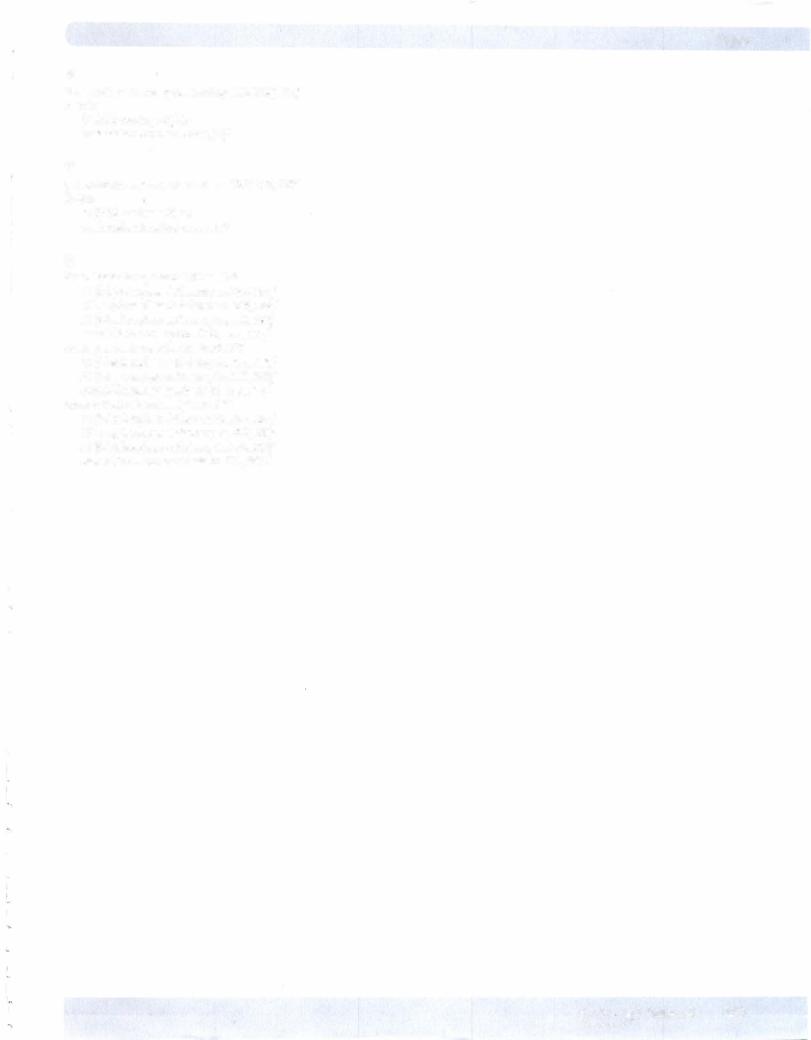
Index
x
x descent, in venous pulse tracing, 1 24, 124f, 125/ X-axis
in ECG tracing, 44f, 45 ventricular function curve,77/
y
y descent, in venous pulse tracing, 124f, 125, 125/ Y-axis
in ECG tracing, 44f, 45 ventricular function curve, 77/
z
Zona fascicularis,adrenal gland, 277
1 1 P-hydroxylase deficiencyin, 297, 297f
1 7 o:-hydroxylase deficiencyin, 299, 299f
2 1 P-hydroxylasedeficiencyin, 296, 296f steroid hormone synthesisin, 281, 281/
Zona glomerulosa, adrenal gland, 277
1 1 P-hydroxylase deficiencyin,298, 298/
2 1 P-hydroxylase deficiencyin, 295, 295f steroid hormonesynthesis in, 280, 280/
Zona reticularis, adrenal gland, 277
1 1 P-hydroxylase deficiencyin, 297, 297f
1 7 o:-hydroxylase deficiencyin, 299, 299f
2 1 P-hydroxylase deficiencyin, 296, 296f steroid hormonesynthesisin, 281, 281/
MEDICAL 423
